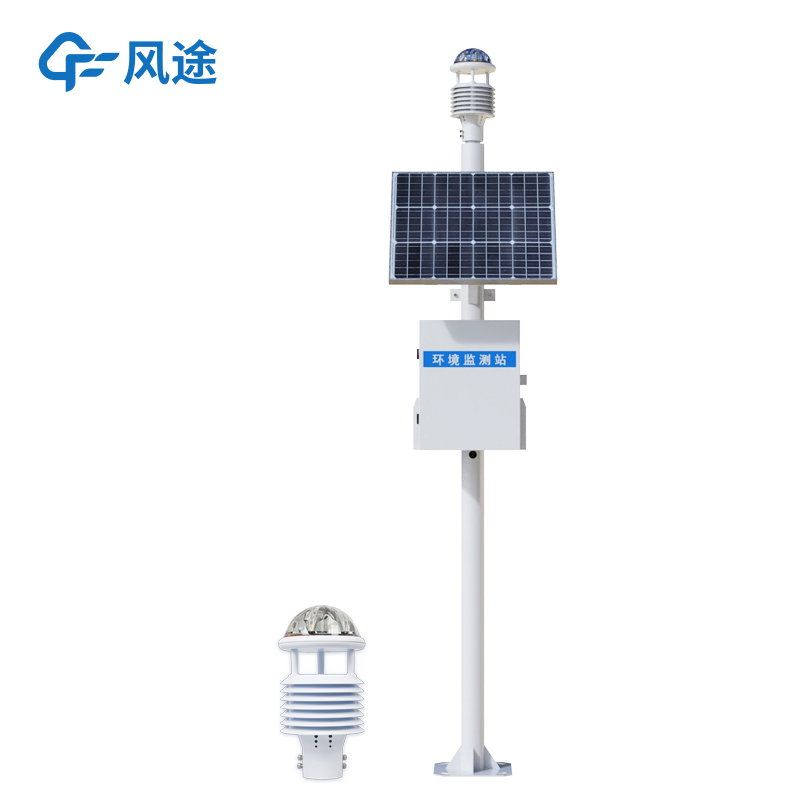Tianqiong Sensor IOT Technology Co., Ltd
Sales Manager:Ms. Emily Wang
Cel,Whatsapp,Wechat:+86 15898932201
Email:info@fengtutec.com
Add:No. 155 Optoelectronic Industry Accelerator, Gaoxin District, Weifang, Shandong, China

Sales Manager:Ms. Emily Wang
Cel,Whatsapp,Wechat:+86 15898932201
Email:info@fengtutec.com
Add:No. 155 Optoelectronic Industry Accelerator, Gaoxin District, Weifang, Shandong, China
time:2025-11-05 08:54:39 source:Weather Station viewed:222 time
TianQiong, as a professional supplier of meteorological monitoring equipment, offers a wide range of weather station types. The company provides everything from basic sensors to regional automatic weather stations that meet operational observation standards, and also specializes in developing professional equipment such as ultrasonic weather stations, agricultural automatic monitoring stations, and road traffic weather stations. TianQiong's products reflect a common industry trend: integrating various reliable sensors with IoT transmission technologies to deliver comprehensive environmental monitoring solutions for fields like meteorology, agriculture, transportation, and environmental protection.
Meteorological monitoring instruments are devices used to measure weather conditions. So, what are the specific types? Let's explore them!
01 Sensors: The Fundamental Units of Meteorological Monitoring
Meteorological sensors are the core components of all weather monitoring devices, responsible for collecting data on single or multiple meteorological elements. What are the common sensors? These include temperature sensors for measuring air temperature and high-humidity environments; humidity sensors for measuring relative humidity, often integrated with temperature sensors as combined units; atmospheric pressure sensors; wind vanes for direction and cup or propeller anemometers for speed, or integrated ultrasonic wind speed and direction sensors; tipping bucket rain gauges, optical rain gauges, radar rain gauges, or piezoelectric rain gauges for measuring precipitation; and pyranometers for measuring total solar radiation, among others. These fundamental sensors form the basis for building more complex weather monitoring stations.
02 Regional Automatic Weather Stations: The Backbone of Weather Monitoring Networks
Regional Automatic Weather Stations are integrated fixed stations composed of multiple basic sensors, serving as the core nodes of weather monitoring networks. They typically include core sensors for temperature, humidity, pressure, wind speed/direction, and precipitation, and can be expanded to monitor elements like solar radiation, evaporation, and soil temperature. Their characteristics include automatic, all-weather operation, with data transmitted remotely via wired or wireless networks to central stations. They form high spatiotemporal density monitoring networks, providing massive amounts of field data for weather forecasting and climate analysis, constituting the foundation of meteorological operations.
03 Ultrasonic Weather Stations: Exemplifying High Accuracy and Low Maintenance
Ultrasonic Weather Stations represent a technological upgrade from regional stations, most notably using the ultrasonic principle to measure wind speed and direction. They have no moving mechanical parts, instead calculating speed and direction precisely by measuring the time difference of ultrasonic sound waves between probes. This design without mechanical wear reduces maintenance needs and improves measurement accuracy and reliability, especially demonstrating significant advantages in harsh conditions like strong winds or freezing rain. They are gradually becoming the standard configuration for new-generation automatic stations.
04 Specialized Weather Stations: Applications for Specific Fields
Specialized Weather Stations are products based on regional automatic station technology, customized with specific sensors and functions for the unique needs of particular industries. For example:
① Agricultural Weather Stations focus on environmental parameters relevant to agricultural production. In addition to basic meteorological elements, they often add sensors for monitoring soil temperature and soil moisture, leaf wetness sensors, and instruments for measuring photosynthetically active radiation. They provide data for precision agriculture, irrigation management, and disaster warning.
② Road Traffic Weather Stations specialize in meteorological conditions affecting traffic safety. They place particular emphasis on monitoring visibility, road surface temperature, road surface condition (dry, damp, icy, snowy, etc.), and snow depth. This data is used directly for operational management on highways and at airports to reduce the risk of traffic accidents caused by adverse weather.
05 Portable and Handheld Weather Stations: Flexible and Mobile Monitoring Tools
Portable Weather Stations refer to integrated devices designed for easy transport and rapid deployment, potentially using suitcase-style or tripod-mounted structures. They possess multi-element monitoring capabilities and are commonly used for temporary or mobile monitoring tasks such as field scientific surveys, emergency meteorological services, or short-term intensive observation campaigns.
Handheld Weather Stations are further miniaturized and integrated, typically with all sensors housed within a single handheld unit, making them extremely lightweight. While measurement accuracy and the number of elements monitored may be somewhat limited, they offer unparalleled portability, suitable for outdoor activities, educational demonstrations, or rapid environmental assessment during field inspections.
The above covers the mainstream meteorological monitoring instruments. From general-purpose regional stations to specialized industry stations, and further to flexible portable and handheld devices, TianQiong® meteorological monitoring instruments have formed a multi-level, comprehensive system meeting the demand for meteorological data across different scenarios.

In the field of geological hazard monitoring and early warning (such as landslides, collapses, ground subsidence, debris flows, etc.), GNSS monitoring stations are a core technical means used for accurately measuring surface displacement and deformation.GNSS equipment precisely determines its absolu...
Soil moisture refers to the degree of dryness and wetness of the soil, and its value has a profound impact on the growth and development of crops. An appropriate soil moisture level can provide sufficient water for crops, ensuring the vigorous growth of plants and ultimately achieving a dual improve...
In the production and use of photovoltaic modules, grid breakage is a relatively common and thorny problem. Grid breakage refers to the existence of breakpoints in the silver paste printing of the main grid of the solar cell, which causes the fine grid lines on the solar cell to be open-circuited wi...
Meteorological Instruments for Solar Energy is a professional device that integrates the monitoring functions of six key meteorological parameters: temperature, humidity, wind speed, wind direction, air pressure, and rainfall. Its core highlight lies in its highly integrated and ingenious design. It...